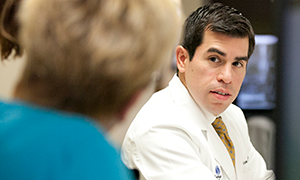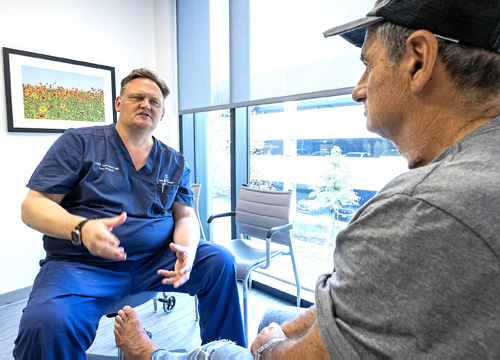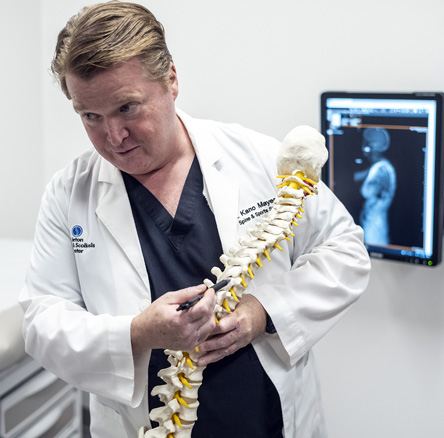
Learn about the shock-absorbing discs that separate the bones in the spine.
NOTICE: Our main Austin clinic location has moved to 1004 West 32nd Street. Click here for a map.
Overview | Causes | Symptoms | Diagnosis | Treatment | FAQ
A bone spur, or osteophyte, is an excess growth of bone around a vertebral body. Bone spurs are fairly common in people over the age of 60. It is not the bone spur itself that is the real problem; pain and inflammation begin to occur when the bone spur rubs against nerves and bones. If bone spurs grow too much, they can impinge on nerve roots.
As we age, the discs in our spine naturally degenerate and lose some of their natural shock-absorbing ability. Factors that contribute to and accelerate this process include stress, injury, poor posture, poor nutrition, and family history.
It is not uncommon for people with osteoarthritis to
get bone spurs. Osteoarthritis is a degenerative condition in which
joint cartilage begins to wear down, causing bone to rub against bone.
As a result, the body may begin to produce new bone to protect against
this, which is how a bone spur forms.
[Top]
Outlined below are some of the diagnostic tools that your physician may use to gain insight into your condition and determine the best treatment plan for your condition.



The goal when treating bone spurs is to minimize pain and prevent any
additional joint damage. Treatment methods may include weight loss,
stretching and physical therapy, rest and ice. Injections can reduce
inflammation long enough to relieve symptoms. Medications such as
ibuprofen or injections may be administered for pain. Bone spurs
can be surgically removed in the case of serious damage and deformity.
[Top]
Osteoporosis can have extremely serious consequences on the spine. It is a degenerative condition in which joint cartilage can begin to wear down, causing bone to rub against bone. As a result, the body may begin to produce new bone to protect against this, which is how a bone spur forms.
Bone spurs can generally be detected through X-ray, which can provide a visual of any bony deposits.
Because bone spurs are usually evidence of an underlying problem, this
main problem should be addressed first. This can include treatment
methods for degenerative disc disease, arthritis and osteoporosis.
These conditions can often be successfully treated with nonsurgical
methods.
[Top]